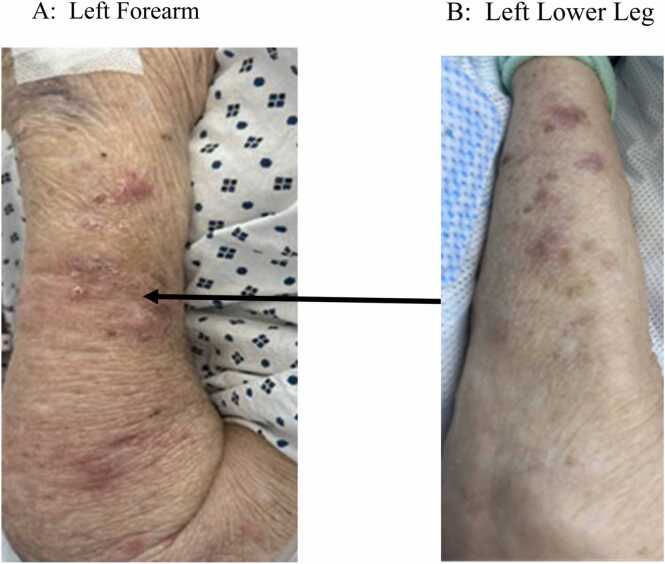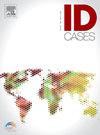Disseminated Mycobacterium Chelonae infection in an immunocompromised adult: An uncommon etiology of skin infection
IF 1
Q4 INFECTIOUS DISEASES
引用次数: 0
Abstract
Mycobacterium Chelonae is a rapidly growing nontuberculous mycobacterium (NTM) that is ubiquitous in the environment and is associated with skin and soft tissue infections (1). Because Mycobacterium Chelonae is an opportunistic infection, it can present as skin abscess, cellulitis, osteomyelitis, pulmonary infection or disseminated infections, particularly in individuals with compromised immune systems or underlying lung conditions such as cystic fibrosis or bronchiectasis. M.Chelonae is one of the most pathogenic rapidly growing mycobacteria (RGM). Diagnosing RGM and distinguishing it from Mycobacterium tuberculosis is important because public health tracking and management is different in these two organisms. Antibiotic susceptibility testing can also provide valuable clues to the species identification of RGM as each species has a specific in vitro antibiotic susceptibility pattern (2). Although incidence of M. Chelonae is increasing, these infections often remain misdiagnosed. This case report discusses the clinical presentation, diagnostic challenges, the rationale for early empiric treatment, and therapeutic options for M. Chelonae infection, emphasizing the importance of timely intervention in immunocompromised individuals.

一名免疫力低下的成年人感染了散播的螯状分枝杆菌:一种不常见的皮肤感染病因。
龟分枝杆菌是一种生长迅速的非结核分枝杆菌(NTM),在环境中无处不在,与皮肤和软组织感染有关(1)。由于龟分枝杆菌是一种机会性感染,它可以表现为皮肤脓肿、蜂窝织炎、骨髓炎、肺部感染或弥散性感染,特别是在免疫系统受损或潜在肺部疾病如囊性纤维化或支气管扩张的个体中。龟分枝杆菌是致病性最强的快速生长分枝杆菌之一。诊断RGM并将其与结核分枝杆菌区分开来非常重要,因为这两种微生物的公共卫生跟踪和管理不同。抗生素敏感性测试也可以为RGM的物种鉴定提供有价值的线索,因为每个物种都有特定的体外抗生素敏感性模式(2)。尽管Chelonae的发病率正在增加,但这些感染经常被误诊。本病例报告讨论了临床表现,诊断挑战,早期经验治疗的基本原理,以及对Chelonae感染的治疗选择,强调了免疫功能低下个体及时干预的重要性。
本文章由计算机程序翻译,如有差异,请以英文原文为准。
求助全文
约1分钟内获得全文
求助全文

 求助内容:
求助内容: 应助结果提醒方式:
应助结果提醒方式:


